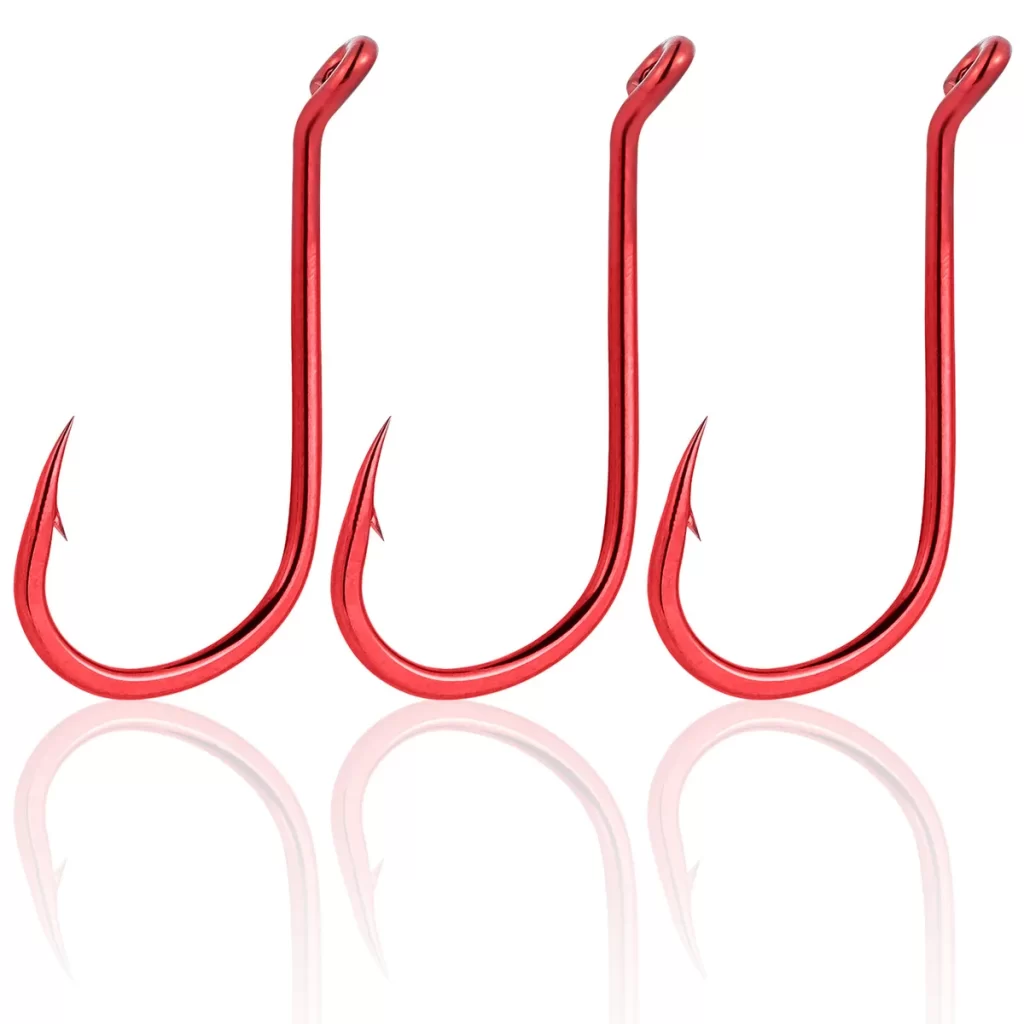
Introduction to: Why are some fishing hooks red?
Fishing hooks come in an array of colors, but the choice of a red hook often stands out among anglers. The use of red hooks has intrigued and divided the fishing community for years. While some swear by their effectiveness, others view them with skepticism, questioning whether the color truly matters in the grand scheme of catching fish. The quest to understand why some fishing hooks are red delves into a fascinating realm of science, psychology, and the evolution of fishing tackle. In this comprehensive guide, we explore the reasons behind the prevalence of red hooks, the science behind fish vision, and the potential impact of color in angling success.
Understanding the Significance of Red Hooks
Historical Perspectives
The origin of red hooks in fishing dates back centuries. Historically, many cultures believed that certain colors, including red, possessed mystical or powerful properties. In various traditions, red was associated with luck, attraction, and success. In fishing, this notion transpired into using red hooks, perceived to enhance the chances of catching fish. This traditional belief could have contributed to the persistence of red hooks in angling.
The Visual Attraction Theory
The visual attraction theory suggests that red hooks stand out more prominently in water, effectively catching the attention of fish. This theory is rooted in the understanding of how fish perceive colors underwater. Studies have shown that certain colors become less visible as depth increases due to the way light travels through water. Red, however, retains its visibility at various depths, making it an attractive color for fishing hooks.
Contrast and Visibility
The contrast between the red hook and the surrounding environment might also play a role in attracting fish. In many natural settings, such as rivers or lakes, the environment consists of various hues of greens and blues. A red hook, when placed against this backdrop, creates a stark contrast, potentially making it more visible to fish.
The Science of Fish Vision
Understanding how fish perceive their environment and the role of color vision is crucial in deciphering the significance of red hooks.
Fish Vision Mechanism
Fish have a different visual system compared to humans. Most fish possess cones in their eyes that detect colors, though the range of colors they can perceive might differ across species. Some species, like trout and bass, have well-developed color vision and can discern a variety of colors. The ability to see red varies among fish, with some having limited or no red color perception.
Wavelengths and Color Perception
The visibility of colors underwater is affected by light absorption and reflection. Longer wavelengths, such as red, are absorbed more quickly in water, making them less visible at greater depths. However, under specific conditions, such as in shallow water or clear conditions, red can still be discernible to fish.
Species-Specific Vision
Different species of fish have different visual capabilities, which influence their responses to colored objects. For instance, certain species might be attracted to red, while others might not react to it at all due to their limited color perception.
Factors Influencing the Effectiveness of Red Hooks

Water Clarity
The clarity of water plays a significant role in determining the visibility of colors. In clear water, red hooks might stand out more vividly, potentially attracting fish. Conversely, in murky or stained waters, the visibility of red could diminish, affecting its effectiveness.
Light Conditions
Light conditions, including the time of day and weather, can impact the visibility of colors underwater. During bright daylight or under direct sunlight, red might be more visible. However, under low light conditions or during overcast weather, red might lose its visibility.
Species Preferences
Different fish species have varying preferences for colors, and their response to red hooks may differ. Understanding the behavioral patterns and color perception of specific fish species is essential in determining the effectiveness of using red hooks.
Practical Implications and Angler Perspectives
Angler Confidence and Perception
The success of using red hooks might be attributed to angler confidence. Anglers who believe in the effectiveness of red hooks may use them more effectively, influencing their fishing techniques and persistence. This confidence and mindset can significantly impact their overall success, regardless of the actual influence of the hook color.
Contextual Application
The application of red hooks varies across fishing scenarios. In certain situations, using red hooks might be more advantageous, such as in clear water conditions or when targeting specific fish species known to respond positively to red.
Alternatives and Adaptations
While red hooks have been popular, modern advancements have introduced various hook colors and materials. Some anglers opt for hooks coated with other colors or opt for specialized materials designed to enhance visibility underwater.
Conclusion to: Why are some fishing hooks red?
The prevalence of red fishing hooks in angling stems from a complex interplay of historical beliefs, scientific understanding of fish vision, and practical angling experiences. While the efficacy of red hooks might not be universally proven, their significance cannot be dismissed entirely. The impact of red hooks in fishing success involves a combination of environmental factors, fish species preferences, and angler perception.
Understanding the science behind fish vision, the role of colors in different water conditions, and the specific behavioral traits of targeted fish species are key in leveraging the potential advantages of using red hooks. However, individual angler confidence and the contextual application of red hooks also play a vital role in determining their effectiveness.
Ultimately, the choice of using red hooks in fishing remains a blend of tradition, science, and personal preference, adding to the colorful tapestry of angling practices worldwide. As anglers continue to explore and innovate, the quest for the perfect hook color will persist, enriching the art and science of fishing for generations to come. Also check out: How do Catfish Breathe? Catfishingusa.com Blog

